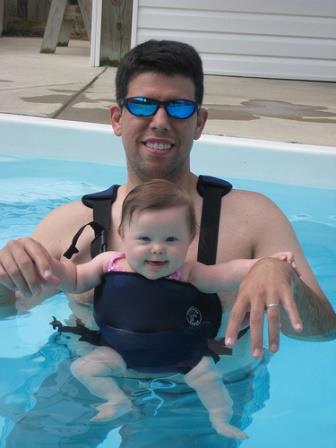
Several years ago, I found that my EI caseload included a couple of families with stay-at-home dads. This was a first for me, and I found myself struggling to connect with family caregivers, which hadn’t happened to me since I was new to the field. Both men were quite nice, but I stumbled when I tried to make conversation to build rapport. What did I have in common with these men? With moms, I could build rapport around so many shared experiences being moms and women. One dad was a former football player and the other was a fitness expert. My idea of working out was to walk from the couch to the bookshelf.
So, I did what I always do when I’m unsure- I read and researched. I searched and searched for good information on working with dads. I found almost nothing except for a few articles on how men and women communicate differently. I had to muddle through mostly on my own, but we all made it through together. These experiences helped shaped my later academic research.
3 Key Strategies for Building Relationships with Dads
Here are some of the key strategies I used to build successful relationships with dads.
Talk side to side rather than face to face.
I can’t remember the source anymore, but the one tip I did garner from searching for books and articles was that men are socialized to talk with each other and others while they are engaged in a task or standing side by side, while woman are socialized to look at each other while talking. This strategy was immediately helpful! When the fitness expert dad offered to make me a fancy coffee, I took that opportunity of having his back to me to ask some deeper questions about what his hopes for his daughter were and what he wanted from EI. It worked! This became part of our weekly routine. He would make me a fancy coffee and I would use this time while he wasn’t looking at me to chat and build rapport. With the other dad, I started positioning my body angled from him instead of looking directly at him. This also worked immediately. He opened up a little more when we weren’t looking directly at each other and I realized we could connect over our similar senses of humor. He hasn’t been a client in years, but our relationship became strong enough that he sends updates on his son’s progress several times a year.
Explicitly invite dads into therapeutic activities.
I learned to do this based on anecdotes from my own work in EI and the dads in my research verified it’s really important. Many dads aren’t sure about what EI is supposed to be, especially if they aren’t the primary caregivers of their children. They hang back and watch or wait for their wife or partner to give them a summary of what happened. Extend a direct invitation by saying, “Hey, we’re going to work on motor skills. Come on over and help me make an obstacle course with the couch cushions” or “One of our outcomes that your kiddo can communicate her wants and needs. Let’s take her in the kitchen and work on some strategies to get her communicating for snack time.” This signals that the dad is an important part of what’s happening and that you want him to participate.
Be really clear about what you are doing and why. Provide this information in writing, too.
Both the dads I worked with and the dads in my research wanted clear explanations of why their EI providers were giving them and their children specific tasks. They wanted to know exactly how doing an obstacle course was related to motor development or how giving a choice of two items at snack time helped with communication development. For many of EI providers this information is so much a part of what we do, that we don’t think to explain the connection. The dads in my research didn’t always feel comfortable asking providers these questions or they asked the questions but didn’t remember the answers after the provider left. Make sure to provide written explanations that address the what and the why. Remember, a quick text (if allowed by your program) counts as being in writing (just make sure you send it to mom AND dad).
Have you tried any of these strategies? Have one we haven’t thought of? Or maybe want some advice about a tricky situation with a dad?
Leave a comment and let us know!
For more information about working with dads, you can check out the Dads Matter! Webinar Series (external website) on the VA Early Intervention Professional Development Center (external website) site. Scroll down on the page to find both archived webinars.

Megan has over a decade of experience working with fathers as an early intervention developmental specialist. Currently, she is an assistant professor at Salem State University, where she teaches future early interventionists and researches dads’ experiences working with early intervention programs. Megan lives in Salem, MA, with her husband, daughter, and two exceptionally naughty cats.


